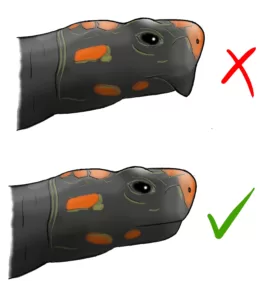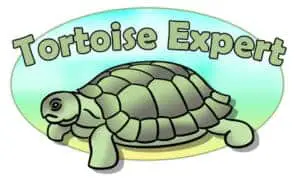
A tortoise’s beak may grow too long and if it does, trimming it is a necessity. However, unless you know what you’re doing you should never attempt to trim the beak at home. It should usually only be done by a vet.
At first glance tortoises seem like pretty low maintenance pets, certainly compared to a dog. It might seem that the occasional soak and daily food provision is about as far as it goes.
But believe it or not, tortoises need a surprising amount of care, and among their many unique requirements is the need to periodically trim their beak.
Sometimes, a tortoise’s beak can overgrow, especially when it lives in captivity. When this happens, you need to do something about it so the tortoise doesn’t have a hard time eating.
Besides, an overgrown beak can also lead to other types of discomfort that you certainly do not want your pet to have to endure.
So, yes, even when you try and do what you can to keep your tortoise’s beak short, you will still likely need to trim it at some point, and you can find out more details in this article.
Do You Need to Trim a Tortoise’s Beak?
Believe it or not, a beak is not a feature exclusive to birds.
Tortoises have beaks too and, in some cases, they may grow a lot, even to the point where they extend down past the jaw. This may end up causing a lot of discomfort for the reptile, and most worryingly, it makes it difficult for it to eat.
In this situation, you must trim the tortoise’s beak.
Wild Tortoises Don’t Need a Beak Trim, so Why Does My Tortoise’s Beak Require Trimming?
In captivity, tortoises lead a completely different life compared to how they live in the wild.
While they roam freely in the wild, they will come across various foods. They will also have to work harder to find that food, as it is not handed to them.
As a result, the beak will deal with more wear and tear, getting trimmed naturally, encountering grit and other abrasive substances as well as food.
This way, beaks tend to stay at a normal size.
By contrast, while in captivity, tortoises do not need to forage for food, and they will not have to make as much of an effort chewing their food, especially if you chop it into smaller pieces.
You provide the reptile with everything it needs, so no effort will be made foraging. As you can imagine, this can lead to the beak growing, and if not taken care of, it can get too long. This is especially the case if there is no cuttlebone in the cage for the tortoise.
If the beak is overgrown, the tortoise may be unable to open its jaw widely enough, and their ability to eat will be seriously impaired.
Not only that, but in some cases, the overgrown beak may even start rubbing against the scales on the front legs of the tortoise, which can lead to irritation, and even infection in severe cases.
As a result, trimming the beak becomes necessary, and it would be tantamount to neglect if you did not do so.
What Increases the Likelihood of an Overgrown Beak?
Some of the factors that lead to a tortoise’s beak overgrowing include:
- Having no cuttlebone or stones to chew on/brush against
- Providing too many foods that are too soft
- Different growth rates that depend on each tortoise
- Underlying internal issues, like metabolic bone disease
How to Trim a Tortoise’s Beak?
If your tortoise’s beak has grown too much and you want to give it a trim, it’s essential to know how to do it safely.
We would always advise you to defer to a vet to carry out this task, but if you believe you are up to the task, or just want to know what’s involved, here it is:
- Use paper towels or another wrap to make sure the tortoise is secure. The legs have to be firmly wrapped in order to make sure the reptile doesn’t try to push the clippers away.
- Try getting access to the face of the tortoise. Bear in mind that tortoises will react to this differently. Some may try to retreat into their shell as they tend to be quite shy. Although it’s possible to trim the beak, even while the tortoise retreats inside the shell, it is still better to do it while its head is out.
- If it helps, you should try gripping the head of the tortoise delicately. However, only do so if the tortoise is not stressed by this movement. Keep it in this position only for a few moments until the beak is trimmed.
- Start using clippers to trim the beak. Keep in mind that you may need to do more than one clip, as clipping the entire beak in one shot may not always be possible. The clippers should be angled at 45 degrees on every side, so it creates a point at the tip of the beak. After that, you can start trimming the tip of that point carefully. Make sure that you also mimic the beak’s natural shape.
- Once you are done clipping, you may have to do some filing too. This is necessary to get rid of potential rough edges. An emery board or nail file can help.
- Make sure you do not use a sharp ended file because this may end up injuring the tortoise, especially if the reptile will move a lot during the filing operation. Something like a flat emery board will be the best option.
Is It Okay to Trim the Tortoise’s Beak at Home?
Trimming a tortoise’s beak can be done at home. In order to do that, though, you need to make sure you have the right tools.
Still, it’s always a better option to have a vet or an expert trimming the beak. If you’re a new tortoise owner, you may end up injuring the reptile.
A tortoise’s beak has a nerve supply and blood vessels running through it, so if you don’t trim it correctly, you may cause bleeding and extreme pain. So, always consult a veterinarian first, especially if you are not experienced with tortoises.
Final Thoughts
Your tortoise’s beak needs to be trimmed if it has overgrown. Before doing so, it is recommended to talk to a veterinarian to make sure the trimming is done safely. If you’re not sure about it, it’s best to let the vet do the trimming.

